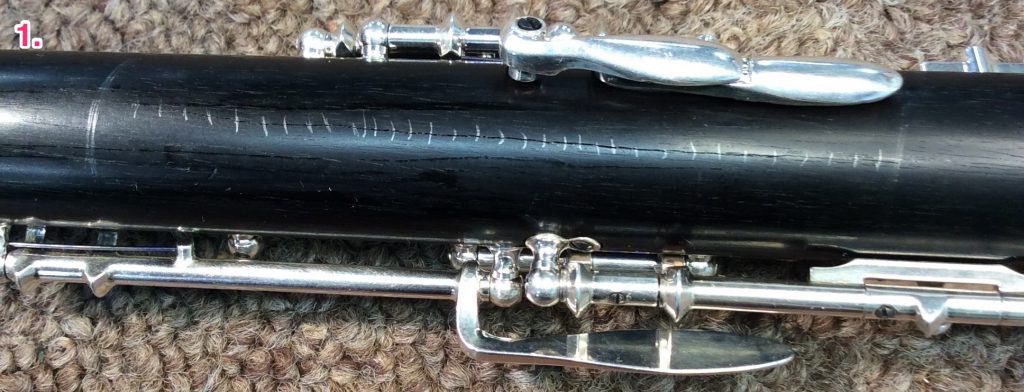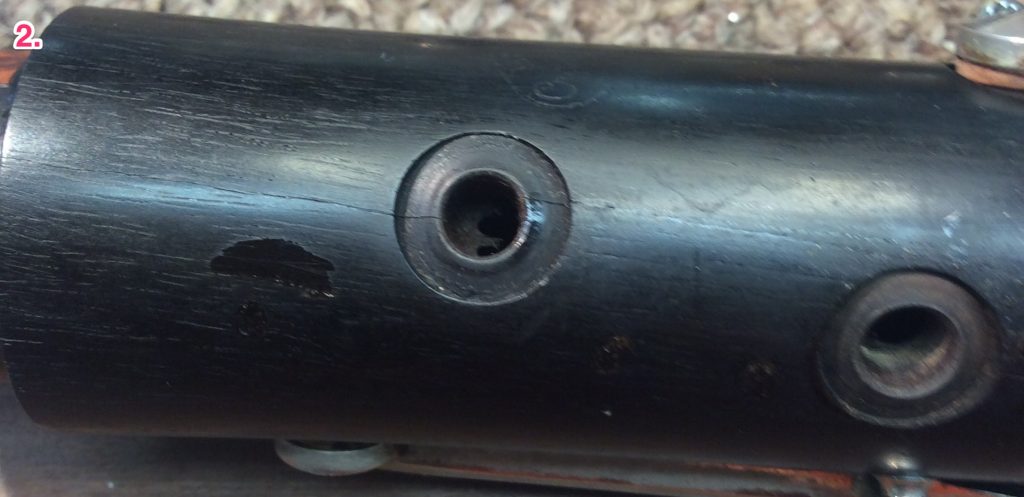Post 63: Why your oboe is more resistant and resonate after repair.
Over the years, we have had many clients comment that their oboe is now much more resistant and/or resonate than when they sent it into the shop for repair. Some of these clients comment how different their oboes are after repair and are unsure if they like the change, but most clients are very happy with the outcome. When your oboe is in pristine mechanical condition, the oboe should be really easy to play in all registers, but because it is fully resonate, it will also be fully and naturally resistant which will give you “the good something” to blow against. Let’s take a look at why this is and what it means to the team at Onks Woodwind.
When it comes to the word resistant, there is a positive and a negative connotation with regard to wind musical instruments. The negative connotation would revolve around the idea that your oboe is resistant to being played, i.e., is not responsive and hard to play. For oboes, this happens over time with normal wear and tear as pads get deep indentions and leak, as keys get loose on the rods/pivot screws, and as adjustment and bumper corks deteriorate. This would also mean since it is not responding well, that the oboe is not fully resonate. A fully resonate oboe is one that has a solid column of air that is vibrating through the whole length of the oboe to produce a big, full sound.
The positive connotation comes into play, pun intended, when the oboe is in pristine condition and plays effortlessly from top to bottom. When you have a cone that is sealed from top to bottom it will be fully and naturally resistant as the air column pushes down the cone. There are several analogies to describe resistance, but for now let’s take a wire mesh strainer from your kitchen. If you place the strainer up to your mouth and blow, there is no resistance because all of the air goes right through the holes of the wire strainer. If you take the same strainer and add a layer of plastic wrap and perform the same trick, it is now very resistant due to the plastic wrap sealing all of the holes of the wire strainer. In a similar way, when you have your oboe fully serviced at Onks Woodwind, we are removing all leaks by surfacing/leveling all pads, solidifying the mechanism so the pads are consistent and renewing old corks. Once this process is completed, your oboe goes from leaking like a strainer to being airtight, thus allowing the instrument to be fully and naturally resistant. The oboe at this point is also fully resonate as the air column can fully vibrate through the whole length of the instrument.
For some oboists, this change in resistance can change many aspects about their oboe and their oboe playing. When we play our oboes, day in and day out for months and then years, the oboe mechanism changes very slowly over that time period. These changes include items listed above, leaky pads, loose mechanism causing keys to not be consistent and adjustment corks deteriorating causing adjustments to not be consistent. There is one more major issue that happens slowly over time as you play your oboe, and that is residue build-up. Every time we play our oboe the moisture that fills the bore and tone holes collects tiny dust/dirt particles. We can also introduce foreign matter directly from our mouths, but the biggest catch twenty-two is the swab/feather that we so greatly need to use. These swabs/feathers also bring small dust, dirt, lint particles into the bore and tone holes of our oboe every time we use them, so even though swabbing is essential, there is a negative by-product from that process. All of this foreign matter, dust/dirt, and lint particles slowly build up coating the bore and tone holes of your oboe which will cause tuning issues over a long period of time.
Between tuning issues, leaky pads and loose mechanisms, the oboe that you originally bought for its amazing sound and feel, is now an oboe that has tuning inaccuracies (not resonant) and is hard to play in the low register (no resistance.) For those more advanced and/or professional oboists, they will be able to play through the issues or subconsciously accommodate for these issues by changing the way they play and/or make reeds. Because of their proficiency, when they receive their oboe back from Onks Woodwind after a full cleaning, the oboe can and does feel drastically different.
Here at Onks Woodwind, we don’t do magical bore or tone hole work, but we do take care of all the small details that make or break an oboe. Your oboe, when in its peak condition, will be as fully resistant and resonate as it naturally can be from the materials it is made from. As we have told many clients, we don’t do anything magical, we just allow the oboe to play to its real, full potential.



